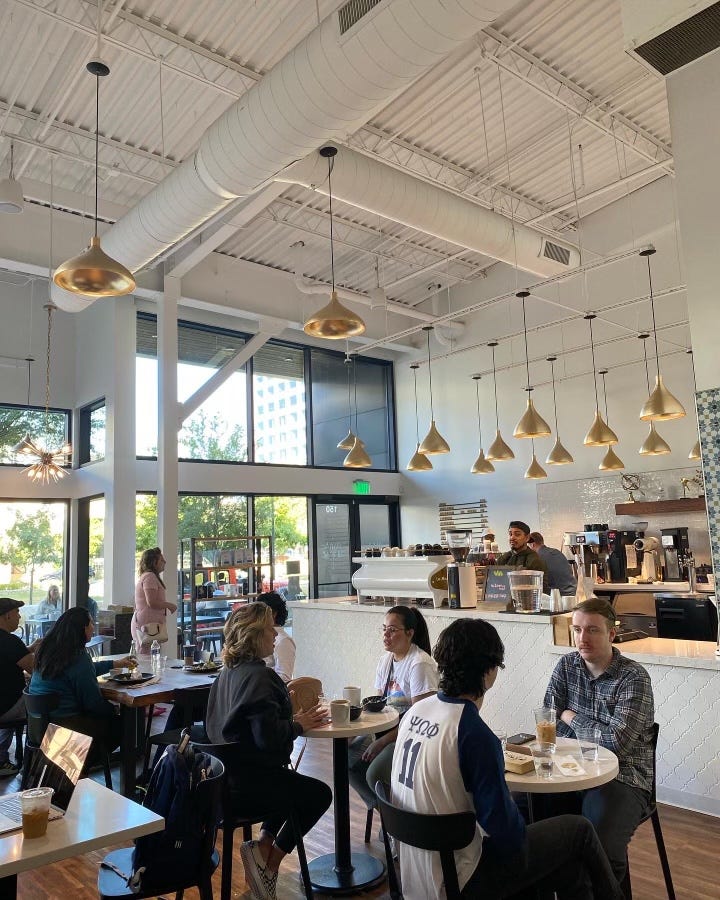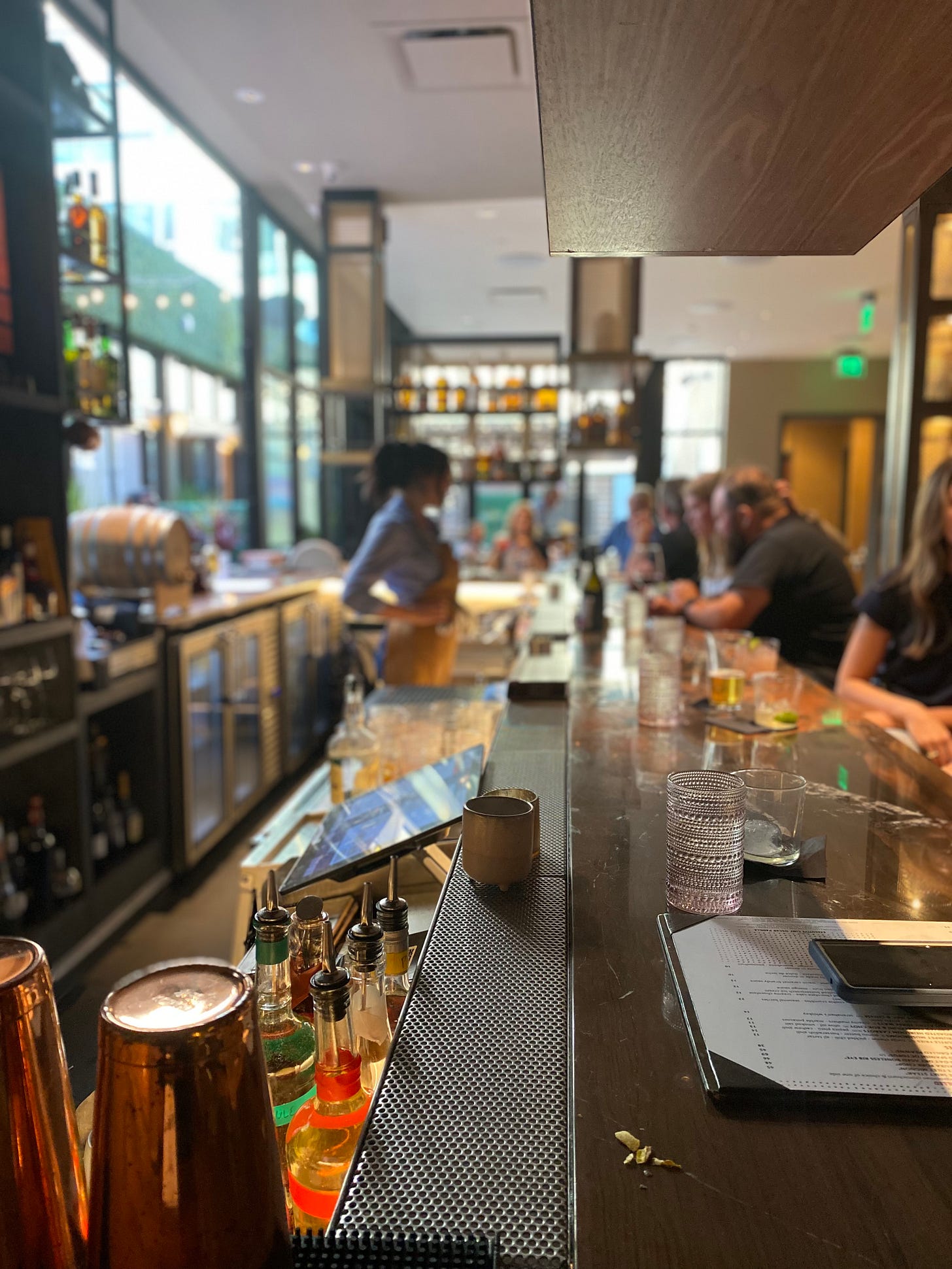“Third Places” As Communities of Connection
An Ode to Ray Oldenburg, author of “The Good, Great Place.”
The year was 1986. I had just started my first job out of college as a newly minted HR Generalist at The Ohio State University Hospitals. On Thursday and Friday after work, the gravitational pull of the nightlife scene would steer me towards my favorite hotspot — an iconic German restaurant in Columbus, Ohio called Schmidt's Sausage Haus.
Known for its iconic bar with a miniature model train that ran on ledge above, Schmidt’s attracted a high energy, eclectic crowd that reached a fever pitched crescendo as the evening wore on. With beer, whiskey sours, and rum and cokes flowing like a river after a heavy rain, the environment was convivial and blyth.
The popular attraction on most evenings was a music DJ affectionately known as “The Bear.” This behemoth of a man spun records into the wee hours of the morning on the dance floor and patio that enjoined the restaurant. I have fond memories of a woman named Jackie who, always with a cocktail in hand, was a willing dance partner. Needless to say, she was unimpressed with my rookie disco moves.
Schmidt’s Sausage House epitomized the spirit of the popular sitcom show Cheers which aired on television from September 30, 1982, to May 20, 1993. Captured in the show’s theme song….
…. Making your way in the world today
Takes everything you've got
Taking a break from all your worries
Sure would help a lot
Wouldn't you like to get away?
All those nights when you've got no lights
The check is in the mail
And your little angel
Hung the cat up by it's tail
And your third fiance didn't show
Sometimes you wanna go
Where everybody knows your name
And they're always glad you came
You wanna be where you can see (ah-ah)
Our troubles are all the same (ah-ah)
You wanna be where everybody knows your name
It was a cozy place frequented by Columbus area regulars — a spot where after a handful of visits “everyone literally knew your name.” The restaurant’s loyal patrons would revel in community, friendships, even connections with strangers that one felt a certain fidelity with.
The vibe in many ways reflected what is known as Collective Effervescence, a term coined in 1912 by sociologist Emile Durkheim to describe the feeling of connection, meaning, and joy that occasionally arises from collective gatherings and events.
As I near the ripe old age of 60, my community has taken on a new face with eclectic coffee houses serving as my epicenters of community and connection. Sadly, however, the ease of building deep, communal relationships as was common in the 80s and 90s has long dissipated. I find it far more challenging to build deep connections in today’s prevailing world where people are much more insular and self-absorbed, a trend no doubt worsened by the pandemic.
A recent American Community Life Survey offering some perspective on this trend reported that only 25 percent of people residing in areas with “very high” amenity access—close to grocery stores, gyms, coffeehouses, and other places of random chance encounters actually socialize with strangers at least once a week.
In 2019, prior to the pandemic, about two-thirds of Americans said they had a local place they frequented regularly. That two-thirds according to this same survey above has since plummeted to little more than half, evidence of the chilling effect of COVID-19 infection risk on community and civic engagement
In the 80’s as an undergraduate sociology major at The Ohio State University, I found myself captivated by the work of urban sociologists and their perspectives on the importance of community. But it wasn’t until in the late nineties that I stumbled upon the work of the late Ray Oldenburg, a former professor of sociology at the University of West Florida.
Oldenburg coined the term “third places” to reflect locales where people spend time between home (‘first’ place) and work (‘second’ place). These spots offer us the opportunity to share ideas, enjoy the company of others, and build relationships.
Third places, then, according to Oldenburg are "anchors" of community life where one can cultivate broader, more creative interaction. In other words, "your third place is where you relax in public, where you encounter familiar faces and make new acquaintances.”
I am currently re-reading Oldenburg’s book called "The Great Good Place" by which explores the significance of informal gathering places in our society. Oldenburg argues that locales such as coffee shops, bars, and parks, are critical connection points for maintaining a sense of community and social interaction. They play a crucial role, he noted, in people’s lives, providing spots where folks can relax, connect with others, and find respite from the daily stresses of life.
On a more macro level, Oldenburg believed that third places are a foundational element for civil society, democracy, civic engagement, building community and cultivating a sense of place. He asserted that the decline of these places in more recent times has contributed to a sense of depression, isolation, and loneliness among many people.
It’s here where Oldenburg’s insightful book provides a number of pragmatic ideas for fostering and sustaining informal gathering places that ignite community, connection and social engagement in our lives.
Over the years, I’ve frequented untold places that deliver a healthy dose of community, connection, and belonging. For example, eclectic martini and cocktail bars (even though I no longer drink) have long held appeal. Presently, Toro Latin Kitchen and Lounge in Denver’s swanky Cherry Creek North District is one of my favorites.
Whenever I’m in San Diego, the spicy vibe at the Mexican cantina King and Queen really gets my juices going. I also enjoy the sophisticated coffeehouse scent there with Communal Coffee in the city’s South Park neighborhood and Lofty Coffee in the always vibrant Little Italy District being among my favorite go-to’s.
For many Americans, their “third-place” homes are largely of the virtual variety — from TikTok, Instagram, and chat messaging boards like Discord to group texts. This runs counter to many of Oldenburg’s views which assert that the most viable spot for nurturing community and connection are physical places where people can routinely connect with one another — parks, recreation centers, salons, and yoga and Pilates classes. Here, the popularity of group activity Pickleball is currently generating enormous fanfare for bringing people together.
Sadly, brick-and-mortar locations are falling by the wayside as the digital world continues to emerge in terms of social connections. Moreover, soaring real estate prices in many cities are making co-working and other settings for business and personal gatherings unaffordable.
The overriding message of Oldenburg’s books is that a stronger network of third places in cities and communities is vital for creating more robust ecosystems of social and economic connection. It creates pockets of inclusiveness and belonging that strengthens community ties through civic interactions.
Oldenburg was candid in his views on the essence of “Third Places and their significance:
"The character of a third place is determined most of all by its regular clientele and is marked by a playful mood, which contrasts with people's more serious involvement in other spheres. Through a radically different kind of setting for a home, the third place is remarkably similar to a good home in the psychological comfort and support that it extends...They are the heart of a community's social vitality, the grassroots of democracy, but sadly, they constitute a diminishing aspect of the American social landscape."







Love your exploration of third spaces, Diamond-Michael! Especially how you ground big ideas in personal, lived examples...while weaving in book and coffeeshop reviews :). As a sober person, I'm drawn to third spaces that are alcohol free (not because I'm tempted to drink, but because I don't like what drinking does to people's personalities and choose to not be around that). Coffeehouses and bookstores = all the third space love!